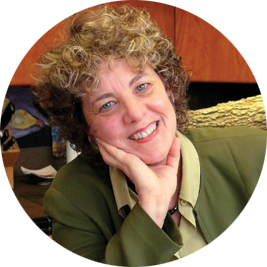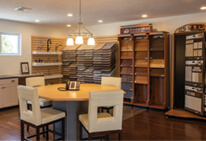Although moored in Princeton, New Jersey now, I keep drifting towards coastlines. I call them ‘capers’–my jaunts by ferry, car, train, and foot to other states and countries where the sea settles me or big, new-found lakes have circumferences I can’t see when swimming. “Just over the horizon,” I keep thinking, “I’ll find a lobster shack, a lemonade stand, a dilapidated old garage with a potter’s wheel spinning beautiful bowls.” I am not alone in yearning for the romance of pausing in the paradise that is the slower, salty spice of life.
Wife and husband Karen and John,married for thirty-four years, have worked hard all of their lives. Now retirement is just over their horizon once their long, daily commutes to jobs in Boston finally end for good. They are counting the days while sitting on the front porch of their just-purchased condo home in The Pinehills, a new village located in the seaside town of Plymouth, MA.
“We want a totally new beginning,”Karen said emphatically as I sat with her and John in their decoration-in-progress living room, “that’s why we sold almost everything when we moved. All of the new furniture we’ve purchased, the new kitchenware, the new linens, any new artwork represent this new phase of our lives.” “This is ‘My Time,’ ‘Our Time’ now,” John explained.
“They must really mean it,”I thought, looking around the house. I saw no trace of their beloved 30-something son and daughter both now living on the West Coast. Downsized out were the teddy bears, the soccer trophies, the thumb-indented coasters created by their kids in kindergarten.
The ‘bones’ of the house–its layout, was terrific with the kitchen, living/dining room, master bedroom all set around a light-filled courtyard. Yet Karen and John realized that the home’s freshly painted bone-white walls needed color. Their windows needed treatments. Bookshelves needed filling. Accessories needed to be placed with TLC to make the house feel some place like home.
As a Design Psychologist I had come to help. Having known this couple for years, I felt that they (like all of us) deserved, not just a ‘house beautiful’ but a nurturing, loving home oasis. Yet psychologically speaking, oases aren’t just built with bricks and mortar, painted with valentine-red plucked from a color wheel, or made private because you’ve bought light-blocking shades.
Instead as a Design Psychologist, my job was to probe more deeply to understand ways this house could be personalized to create their ideal home. With this in mind, I asked, “When you imagine your ideal, what would that home be like?” At first Karen and John answered using off-the-shelf brochure lingo: “Master bedroom on the ground floor, plenty of light, big kitchen.” Guiding them, I asked, “Not practical or aesthetic things. Tell me about your ideal home oasis.” Suddenly (as if I’d waved a magic wand), they described a long-yearned-for log cabin in the Montana woods.

Rather than settle in Montana, however, John, especially, had “returned home” since his mother used to live on this Massachusetts South Shore. I’ve learned, in fact, that people often rework their past history of place–replicate or reject it (or do some combination of the two). Then, also, a hallmark of Karen’s and John’s coupledom was that they both loved nature and had hiked and camped together for 34 years. Retirement for them meant not only pioneering a new life-path but wending their way together through real-life trails in yet more woods. No wonder they’d purchased a place where they could walk in the pine forests of The Pinehills.
Probing further, I began asking them questions based on my Design Psychology Toolbox of Exercises to identify their positive associations with past place–associations that could be translated into home design elements–“triggers” that would help them envision a life-enhancing future together.
“Which pieces of furniture here really symbolize ‘My Time/Our Time’—your new life together?” I asked. “This rocking chair,” John answered immediately, “it’s the place where I can sit, relax, and really take time for myself to sit and think.”
“Our new dining room set,” said Karen, gesturing toward the beautiful, high-quality wooden table they’d purchased. “Like all of the furniture we’ve bought, it’s different from the traditional style we lived with for years. It’s transitional style furniture–not traditional, or modern. It’s a new look for our new life.”
The stunning wooden table and chairs and matching sideboard certainly fit with the theme of “all things rustic” that grounded them. Given their cabin dream, I likewise suggested using a long, lyrical branch rather than a rod to hold their living room curtains, thus giving the space a subtle, outdoors feel.
“What about our kitchen backsplash?” asked Karen with enthusiasm as she began to recognize how the house could be a symbol of their best-dreamed-of-future life and ‘selves.’ She and John were stumped as subway or glass tiles seemed to be “the thing” nowadays. But “THE THING” belonged in a brochure, not in their personalized place. Instead, they settled on slate, an earthy material that would work well color-wise with their kitchen cabinets and have psychological impact by reminding them that the earth’s hills beckoned…
Together, the three of uscontinued to imagine ways echoes of their best-past and visions of their dreamed-for future could be designed into their home spaces. In the present, however, the kitchen was the heart of their home. Both Karen and John wanted to paint it a color that would exude the sense of warmth and joy they felt each time they opened their new front door. They chose a cherry color that also would create a ‘visual break’ as they looked down their home’s long hallway.
Then, too, in the present, John was using their home’s den as his office, a space that felt incomplete with a makeshift table as a desk, printers and computers placed haphazardly here and there. Yet he pointed to another rocking chair previously owned by his mother, saying, “In this room, in that rocking chair I spent time healing after my hip operations. From here I could look out at the hillside yet also take ‘me time’ to just rest.” On the house’s floor plan, the builders had labeled this room a den/office. Yet, beyond such labels, spaces in one’s home can be designed to meet one’s deeper psychological needs. In fact as we talked further, John became psyched about more deliberately turning this private office into a ‘healing room.’
As we go through transitions,life is a long walk–a journey. On our journey, our home can help us become our best selves not only via layout, use of color, furniture, textures, etc. but via the careful placement of meaningful (not just beautiful) objects around the house. In the process of moving, for example, Karen and John had ‘curated’ their collection of objects by throwing most of their possessions out!
“I have less and less old photos of my parents as we are the older generation now,” John explained.
Nevertheless, they were soon to unpackmore boxes and prominently place photos of their son and daughter on their bookshelf. Then, too, John, an amateur photographer, remembered the hundreds of artful photographs he’d taken, now stored away in their new basement. “Perhaps the best of these can be framed and hung in our hallway,” he remarked.
Karen then mentioned the uniquefridge magnets she’d collected at each place they’d vacationed through the years. I suggested mounting, framing and hanging these mementos in the dining room. This would mean replacing a painting they’d bought at Pier One “which had the right colors,” but which, in no way mirrored the heartfelt story of their lives and future dreams.
In fact, by now doubting that theyhad thrown out everything, I asked John, “If God forbid there were a fire in the house, what one object would you save?” John quickly mentioned, “The little statues of Karen and myself that we displayed at our wedding.” He ushered me into their master bedroom. There, on the dresser, in view when they awoke each morning, were simple, ceramic male and female figures–separate, yet hugging–caring for one another as their life begins again.










